BY JON BELL
A new generation of outdoor apparel companies targets the young and the urban.
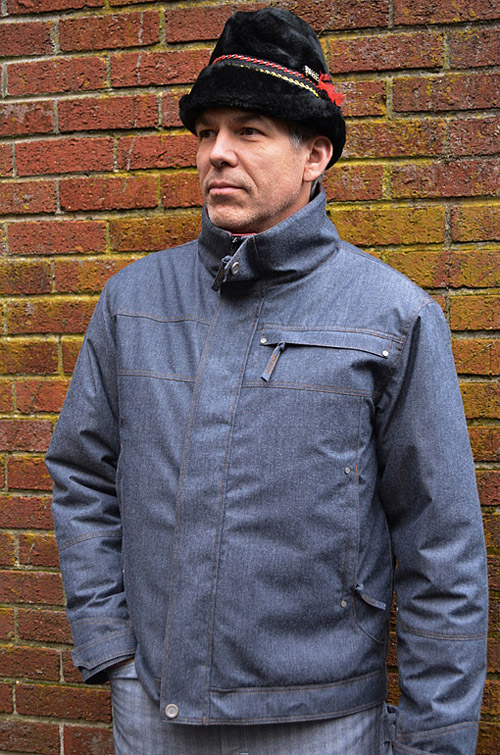 BY JON BELL | PHOTOS BY ANTHONY PIDGEON
BY JON BELL | PHOTOS BY ANTHONY PIDGEON
While on a trip to Japan this past April, Dan Tiegs saw something that sums up a lot of what’s happening in Oregon’s outdoor apparel industry these days: a pair of boots.
Actually Tiegs, a veteran of the technical outdoor and ski industry who has done time with the likes of Columbia Sportswear and Hi-Tec Sports, saw at least three or four pairs of the boots on the feet of young Japanese men while in Tokyo and Kyoto as part of the Portland Development Commission’s Popup PDX trade mission. The trip’s goal was to expose nine Portland athletic and outdoor companies, including Tiegs’ WILD Outdoor Apparel, to potential buyers and distributors.
The footwear at hand wasn’t some stylish Japanese boot designed for a night on the town, but instead a rugged hiker that would seem much more at home on a Cascade mountain trail. And unlike so many shoes and boots available today, which are manufactured largely in Asian factories, these boots were in fact made in the U.S.A., right out in Northeast Portland by Danner Boots, the storied Oregon company that got its start making boots for loggers in 1932. Danner’s domestically produced, Oregon-inspired Stumptown collection has been a big hit with Japanese consumers who can’t get enough of the Beaver State mystique.
“Danner has really done a great job of branding this made-in-Portland boot as a real lifestyle boot, and it’s gotten big with Japanese consumers,” Tiegs says. “They want it made in the U.S.A., and made in Portland is even better. There’s something about the authenticity of the lifestyle here that carries a lot of weight.”
That Oregon appeal — and the stateside manufacturing that comes along with it — is just one of the trends driving the outdoor and apparel cluster as it continues to evolve and mature. In what might be considered a new wave washing over one of the state’s strongest clusters, Oregon’s outdoor industry is becoming hipper, more youthful and more diverse, as entrepreneurs in the space embrace crowdfunding and social media, along with new designs blending urban and wilderness flair.
The outdoor apparel sector here does have its gaps — investment can be hard to come by and talent often gets imported from out of state — but the numbers are hard to ignore. According to the PDC, the Portland area has the highest concentration of athletic and outdoor industry firms in the nation. The state is home to no fewer than 810 companies employing nearly 15,000 people for a total payroll of more than $1.6 billion. Overseas markets are hot for Oregon goods, and even though the Nike swoosh still reigns supreme, other icons are making their mark. A case in point: in performance after performance, including on The Late Show with David Letterman, Grammy-nominated musical group Band of Horses sports T-shirts and hats from Portland’s very own Poler Outdoor Stuff.
“I think in the U.S., Portland is certainly the hub of the industry, and it’s known as that,” says Lisa Thompson, president of the U.S. arm of Icebreaker, the New Zealand merino-wool clothing company that had global sales of more than $180 million in 2012. Along with companies like REI, the North Face, Poler and Mountain Hardwear, Icebreaker’s retail store is just one of countless businesses that give downtown Portland and the Pearl District an unmistakable outdoor flavor. Canada’s Arc’teryx will join the club with a 3,100-square-foot retail store on Northwest 33rd Avenue this fall.
“I don’t know if that [reputation] goes as far as Europe or elsewhere in the world,” Thompson says, “but definitely in the U.S., Portland is the hub.”
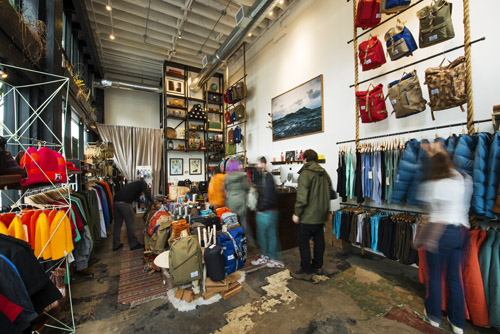 For Michelle Rose, Portland’s design-centered approach to the outdoor and apparel space has been the main driver behind its success. A designer herself who has worked for big names like Columbia and Patagonia, Rose and her husband, Sam Ward, organized the recent Struktur Event, a creative conference for the outdoor design industry. The event drew more than 100 people to the Ecotrust building in early May to talk about everything from social media to major brands wooing more women customers, including Columbia’s recent $190 million acquisition of the California yoga apparel company PrAna Living.
For Michelle Rose, Portland’s design-centered approach to the outdoor and apparel space has been the main driver behind its success. A designer herself who has worked for big names like Columbia and Patagonia, Rose and her husband, Sam Ward, organized the recent Struktur Event, a creative conference for the outdoor design industry. The event drew more than 100 people to the Ecotrust building in early May to talk about everything from social media to major brands wooing more women customers, including Columbia’s recent $190 million acquisition of the California yoga apparel company PrAna Living.
Rose and Ward used to live in Portland but moved to California in 2007 so she could work for the North Face. When they decided to organize the Struktur Event, they knew it had to be in Portland.
“Portland has always had a very unusual aesthetic that drives things in a much different way than California or New York,” Rose says. “In California, it’s not as design focused or as focused on good design.”
Part of that unusual aesthetic was an innovative push to blend the technical aspects of outdoor apparel with urban designs, so that people could wear the same clothes to hike on Mount Hood as they would to grab a cocktail downtown. One of the earlier and most notable companies to pursue that line was Nau, which launched in Portland in 2007 but closed up shop just over a year later before being bought and sold a couple times. Tiegs markets his business as a “mountain to bar” company, and Will Pennartz, senior marketing manager for LaCrosse, says Danner’s blending of the outdoors with lifestyle design is partly in response to demand from Asian markets.
“I think for us, a lot of that did start in Japan, and now we have seen the trend come here,” he says.
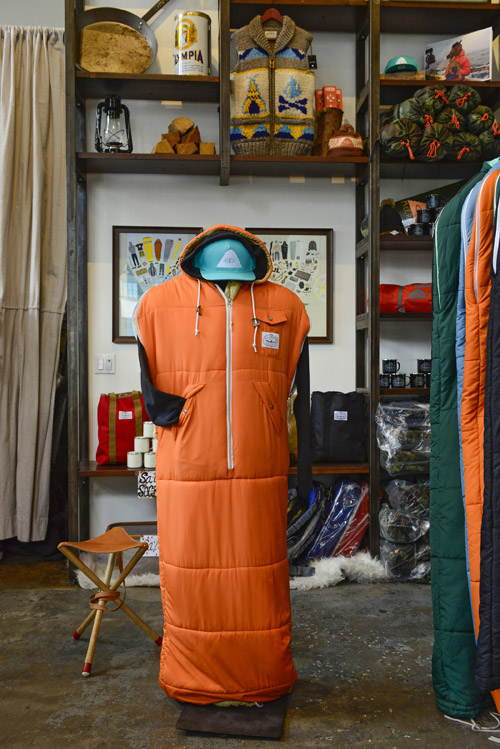 Founded in 2011, Poler Outdoor Stuff has taken the concept a step further and in a very Portland-style way, offering outdoor apparel with a bit of hipster flair; think trucker hats, hooded sweatshirts and a wearable sleeping bag called the Napsack. The idea is less about looking like you’re off for a technical summit of Mount Hood’s north face and more about hanging around a campfire or motorcycle touring across the lower 48.
Founded in 2011, Poler Outdoor Stuff has taken the concept a step further and in a very Portland-style way, offering outdoor apparel with a bit of hipster flair; think trucker hats, hooded sweatshirts and a wearable sleeping bag called the Napsack. The idea is less about looking like you’re off for a technical summit of Mount Hood’s north face and more about hanging around a campfire or motorcycle touring across the lower 48.
“We felt that there was an opportunity to bring action sports and outdoors together for the first time in an authentic way,” says Benji Wagner, a bearded photographer, filmmaker and co-founder of the company who had never worked in apparel or design before. Today the company employs 10 and will expand from a 700-square-foot retail shop to a 4,000-square-foot one downtown this month. “We also saw that the outdoor industry was full of great products but was not connecting with young people in a way that we related to. We are hoping to inspire people to connect with the outdoors in whatever way they choose.”
An avid surfer and sailor, Matt Murphy also hopes to motivate young city dwellers to get outside. The CEO and founder of Proper Course & Co., a new footwear brand inspired by sailing, Murphy, 35, describes his target customer as “an urban prepster: a man in his early 20s to mid-40s, who lives near a body of water, in a place considered to be a hub for creative professionals.”
Launched in 2011, Proper Course will debut its first line of high fashion functional shoes in 2015. “There is more footwear, apparel and outdoor knowledge per square mile in Portland than any place in the world,” enthuses Murphy, a Cleveland, Ohio native who moved to Portland five years ago and previously worked in automotive advertising. The Rose City’s “entrepreneurial spirit” was another attraction, he says.
While Portland is a hotbed of design, development and marketing in the outdoor and apparel industry, one component of the process remains largely an overseas endeavor: manufacturing. In fact, all but about 2% of apparel sold in the U.S. is made overseas, according to the American Apparel & Footwear Association.
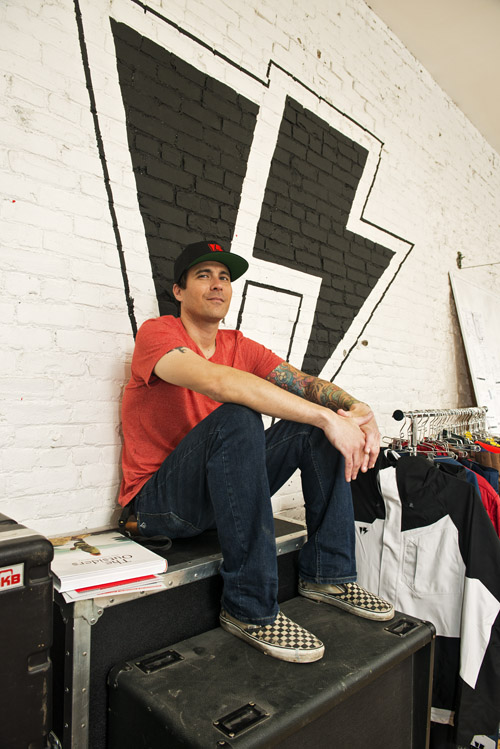 “All of our manufacturing is done overseas in China,” says Daniel Clancey, founder of Homeschool Snowboarding, which makes outerwear and underlayers for the snowboarding set. A former designer for Columbia, the tattooed Clancey — laid-back in conversation yet laser focused on the business — has built annual sales for his company to just under $1 million over the past five years. “We searched for a long time before launching for a manufacturer in Oregon, but the reality is that it’s just cost prohibitive for us.”
“All of our manufacturing is done overseas in China,” says Daniel Clancey, founder of Homeschool Snowboarding, which makes outerwear and underlayers for the snowboarding set. A former designer for Columbia, the tattooed Clancey — laid-back in conversation yet laser focused on the business — has built annual sales for his company to just under $1 million over the past five years. “We searched for a long time before launching for a manufacturer in Oregon, but the reality is that it’s just cost prohibitive for us.”
Others, however, have been trying to make Made in the U.S.A. work for them. Rumors are swirling that Nike may be considering some manufacturing operations in Washington County, while Danner has always had at least some of its manufacturing done in the U.S. According to Taylor Towne, public relations coordinator for Danner’s parent company, LaCrosse Footwear, between 30% and 40% of the company’s products are made in the United States. That includes models from the Stumptown line made in collaboration with Beckel Canvas Products, a Portland company that’s been making tents for more than 50 years.
“We definitely see the demand for that here and are bringing more and more into the Portland factory,” she says.
Tiegs, who makes limited-edition jackets, funded WILD’s most recent offering, the Burnside Alpha Jacket, through a successful $15,000 Crowd Supply effort that had customers pre-ordering jackets that will be ready to ship in August. For WILD, Tiegs had some of his initial products made overseas, but now they’re produced locally even though the finished product can cost double what it costs to make overseas — or more. He says Asian manufacturers weren’t that interested in small orders, and being close to his Newberg manufacturer gives him more control and direct involvement in the process. As with Danner’s boots, Tiegs says the made-in-Oregon aspect of his products has huge appeal in Japan and other international markets.
“Everybody agreed that being made in Oregon was the biggest differentiator,” says Tiegs, who hopes to receive a test order from one Japanese distributor he met during the PDC trip.
Now in her sixth year of business, Jennifer Ferguson has shifted the manufacturing for her sports-bra company, Handful, back to the U.S., as well. It was a move she made in 2013 to try and help support the local economy, but it’s been a bumpy transition. To help start the move, Handful staged a Crowd Supply campaign, which raised just over $50,000. The company found a manufacturer in Salem and, even though costs rose, tried to make price increases as small as possible and absorb some of the margins without impacting customers.
Getting the quantity of products that Handful needed proved to be frustrating the first year of U.S. manufacturing, Ferguson says, but the company is adding another stateside manufacturer in Los Angeles this year, which she says should help smooth things out. It’s a new relationship that she was able to build through a third-party production company that’s tied closely to Portland’s apparel cluster.
“Living right in the backyard of all these companies means that there are all these amazing resources here that you might not have access to otherwise,” Ferguson says.
With so many companies, so much experience and such varied talent concentrated in a single region, resources do indeed abound.
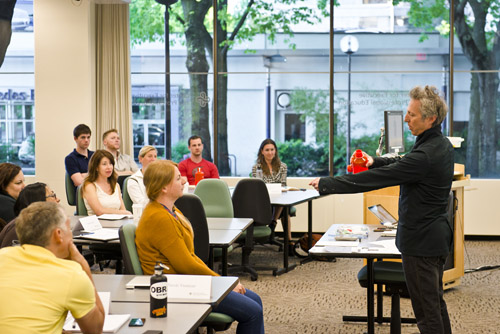 But there are challenges as well. One of Clancey’s immediate concerns is the paucity of local investors interested in supporting smaller apparel companies like Homeschool. Not that there aren’t investors — they’re just not in Portland. He says some of the reluctance may stem from clothing companies that have stumbled big in the past, but investing in an apparel company versus, say, a tech startup also requires a much bigger investment and incubation period.
But there are challenges as well. One of Clancey’s immediate concerns is the paucity of local investors interested in supporting smaller apparel companies like Homeschool. Not that there aren’t investors — they’re just not in Portland. He says some of the reluctance may stem from clothing companies that have stumbled big in the past, but investing in an apparel company versus, say, a tech startup also requires a much bigger investment and incubation period.
“It takes a lot more initial capital and a longer period of time to see success,” says Sucheta Bal, PDC’s business development coordinator for the athletic and outdoor industry. “Some investors look more at the tech model and think that that’s where they want to go with their money.”
Despite the area’s reputation for a deep pool of creative and experienced talent, Bal says many companies in the apparel space still seem to recruit people from outside the region. Icebreaker, for example, brought seasoned outdoor industry and PR veteran Shana Frahm up from California to head up its global PR operations. Rose notes, too, that the Bay Area is still a bigger draw for technology — Nike, which recently nixed the hardware side of its FuelBand fitness tracker, opened its Nike+ Fuel Lab there, not in Portland, in April — and the East Coast is much more attractive when it comes to the latest in fabric-mill technology.
“We continue to look at ways to support the cluster in training and development in any way possible,” says Paul Swangard, managing director for the Warsaw Sports Marketing Center at the University of Oregon, which is one of the ways Oregon goes about growing its own talent. At UO, that means continuing to offer the sports-focused MBA while adding new programs and offering industry-focused workshops in Portland. One such workshop in early May brought together industry professionals to learn about creative storytelling for sports-product marketing.
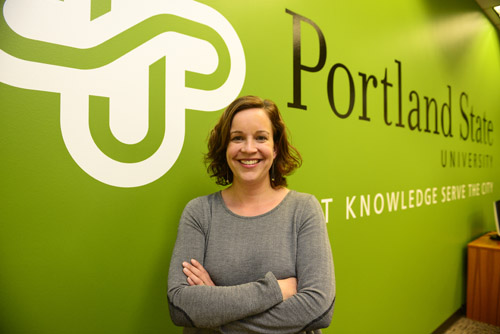 Portland State University has also expanded its footprint in the athletic and outdoor space in recent years, adding an undergraduate certificate program in marketing, retailing, distribution and sales, and a noncredit certificate for students interested in product planning, sourcing and merchandising. Lauren Beitelspacher, director of the school’s athletic and outdoor industry program, says programs often include presentations from professionals who work for big-name apparel companies in the metro region. There are also efforts to increase the number of women and minorities who enter the field, including a newly launched affiliate chapter of the Outdoor Industries Women’s Coalition and a partnership with Pensole Footwear Design Academy, set to kick off in 2015, that will introduce students from historically black colleges to careers in footwear design.
Portland State University has also expanded its footprint in the athletic and outdoor space in recent years, adding an undergraduate certificate program in marketing, retailing, distribution and sales, and a noncredit certificate for students interested in product planning, sourcing and merchandising. Lauren Beitelspacher, director of the school’s athletic and outdoor industry program, says programs often include presentations from professionals who work for big-name apparel companies in the metro region. There are also efforts to increase the number of women and minorities who enter the field, including a newly launched affiliate chapter of the Outdoor Industries Women’s Coalition and a partnership with Pensole Footwear Design Academy, set to kick off in 2015, that will introduce students from historically black colleges to careers in footwear design.
“There aren’t as many women and minorities in the field, but that’s changing,” Beitelspacher says. “I mean, women are among the fastest-growing demographic for many of these retailers and products, so it’d be great to employ them.”
The sector is likely to diversify as it evolves — and as Portland itself becomes more diverse. And as companies that manufacture locally find success, others may follow. Hip, youthful, with forays into diversity and local manufacturing: If that description sounds familiar, it’s because the evolution of Portland’s outdoor apparel cluster looks a whole lot like the evolution of Portland.
Pass the Baton
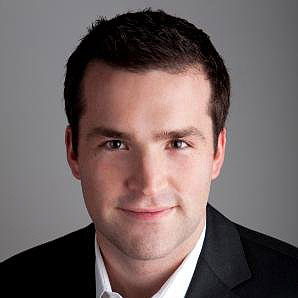 Taylor Hinshaw, a 25-year-old product line manager from Amer Sports, had plenty of respect for the more experienced industry professionals who make up the Portland Development Commission’s Athletic & Outdoor Industry Council. But he also thought there was room for a little more youthful engagement. So in 2012 the graduate of the University of Oregon’s sports marketing program pitched the idea of the Athletic & Outdoor Young Professionals group to the Portland Development Commission. The agency jumped onboard, making AOYP part of its outdoor apparel cluster efforts, organizing happy hours and funding three larger events annually.
Taylor Hinshaw, a 25-year-old product line manager from Amer Sports, had plenty of respect for the more experienced industry professionals who make up the Portland Development Commission’s Athletic & Outdoor Industry Council. But he also thought there was room for a little more youthful engagement. So in 2012 the graduate of the University of Oregon’s sports marketing program pitched the idea of the Athletic & Outdoor Young Professionals group to the Portland Development Commission. The agency jumped onboard, making AOYP part of its outdoor apparel cluster efforts, organizing happy hours and funding three larger events annually.
OB: Why found AOYP?
Hinshaw: “There are so many outdoor and athletic brands in Portland, and so many young professionals are drawn here because of that. But places like Nike and Columbia, they have their own separate cultures, and they’re in their bubbles. What’s lacking is one neutral ground for young professionals to come together, have a drink, make a connection and see where it goes.”
OB: AOYP appears to be targeting the big guns — Nike, Columbia. Why not go after the smaller brands?
Hinshaw: “The way I looked at this group, the way to be successful and really get it going was to get the big guys onboard. But my next big initiative is to get representation from the smaller guys, because they represent to an even fuller extent a lot of what is going on here.”
OB: What’s on your wish list?
Hinshaw: “I see a First Thursday kind of scene, where all these companies and people are all set up on the street, showcasing what they’re doing, creating a ton of exposure for the city and really showing the world how great a place Portland is.”
OB: Describe your most recent outdoor endeavor.
Hinshaw: “I’m a big runner and just did the Shamrock Run. Actually, my shins are still killing me from that.”


